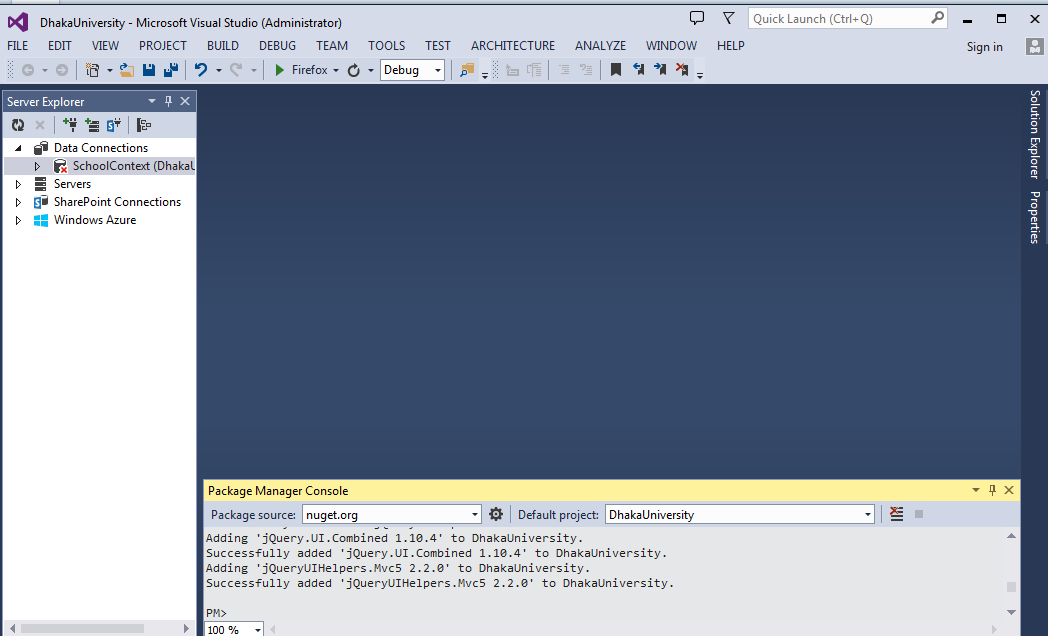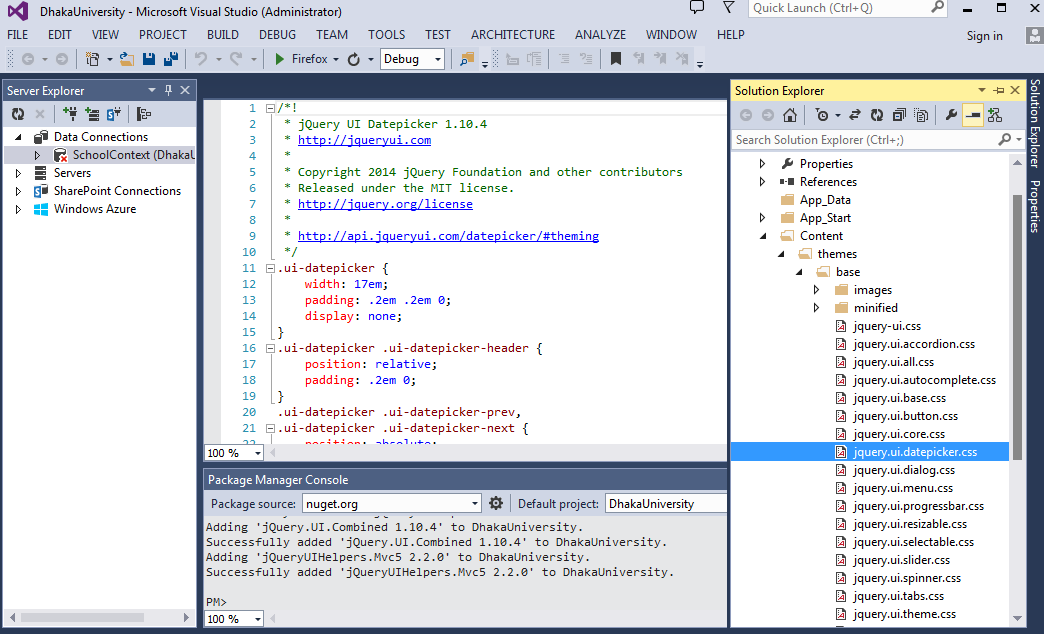Dynamic DropdownList in ASP.NET MVC5 Step By Step
Create Two DB Tables e.g.
1.Designstions
Colunns: DesignationID(PK,FK,numeric(6,0),not null)
Designation (Varchar(50),null)
2.
Persons
Columns: PersonID(PK,numeric(6,0),not null)
DesignationID(FK,numeric(6,0),not null)
Create The Models:
Designation.cs
{
public decimal DesignationID {
get;
set; }
public string Designation {
get;
set; }
}
Person.cs
{
public decimal PersonID{
get;
set; }
[
DisplayName(
"Designation")]
public decimal DesignationID{
get;
set; }
public virtual Designation designation {
get;
set; }
}
PersonController.cs
{
public class PersonController: Controller
{
public ActionResult Index()
{
var mamun= db.
Persons.Include(t => t.designation );
return View(mamun.ToList());
}
public ActionResult Create()
{
ViewBag.
DesignstionID=
new SelectList(db.
Designstions,
"DesignstionID",
"Designstion");
return View();
}
public ActionResult Edit(
decimal id)
{
if (id ==
null)
{
return new HttpStatusCodeResult(HttpStatusCode.BadRequest);
}
Person person = db.Persons.Find(id);
if (tblsalesperson ==
null)
{
return HttpNotFound();
}
ViewBag.
DesignstionID=
new SelectList(db.
Designstions,
"DesignstionID",
"Designstion",person.
DesignstionID);
return View(person);
}
}
}
Create.cshtml & Edit.cshtml:
<div class="form-group">
@Html.Label("Designation", new { @class = "control-label col-md-2" })
<div class="col-md-10">
@Html.DropDownList("DesignstionID")
@Html.ValidationMessageFor(model => model.DesignstionID)
</div>
</div>
To Add CSS class 'dropdownList' ,Use:
@Html.DropDownList("DesignstionID", (IEnumerable<SelectListItem>)ViewBag.DesignstionID, new { @class = "dropdownList" }) Instead Of that.
Index:
@foreach (var item in Model)
{
<td>
@Html.DisplayFor(modelItem => item.Designation.Designation)
</td>
}
To Get a Fanstatic One:










.png)
.png)




